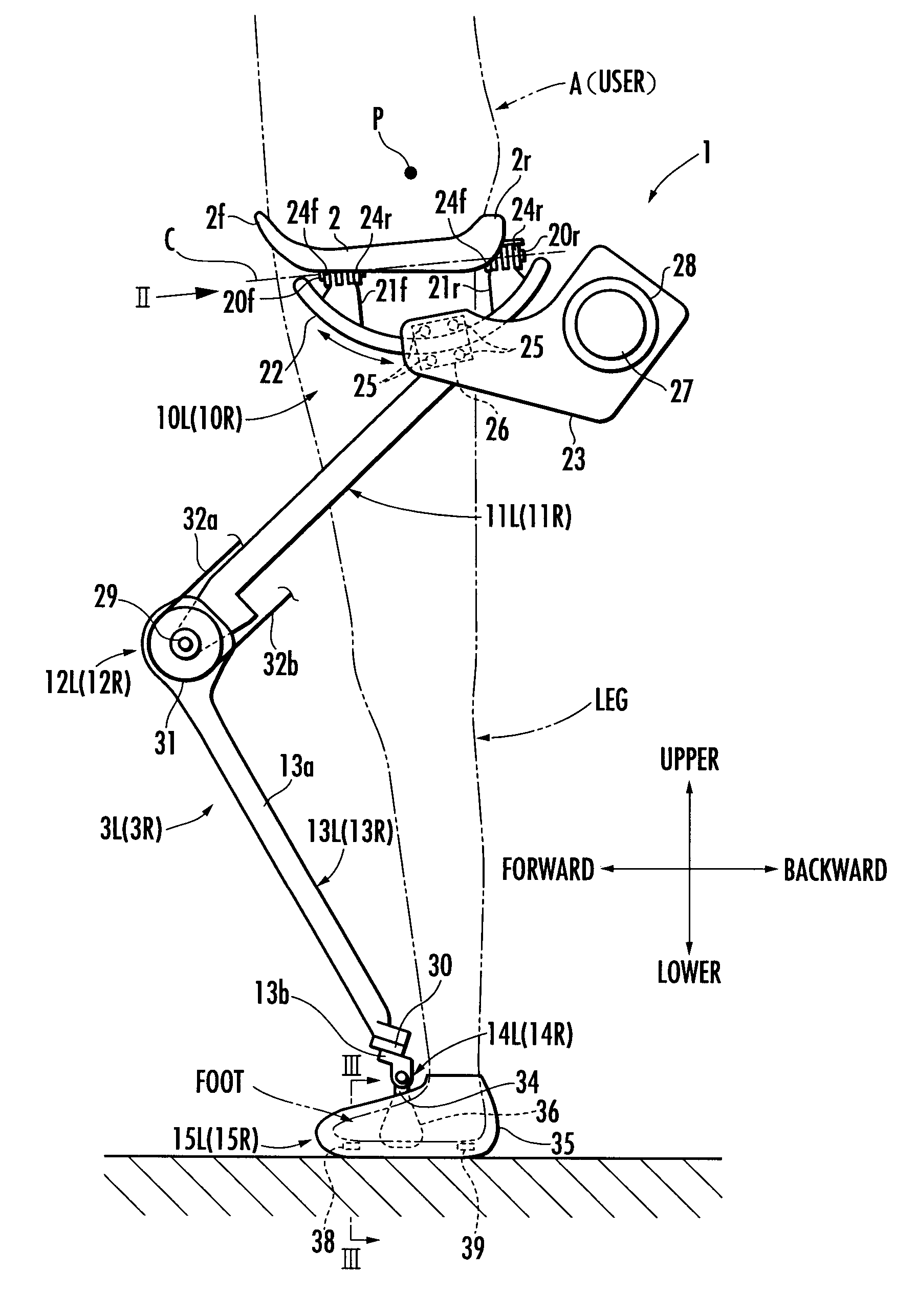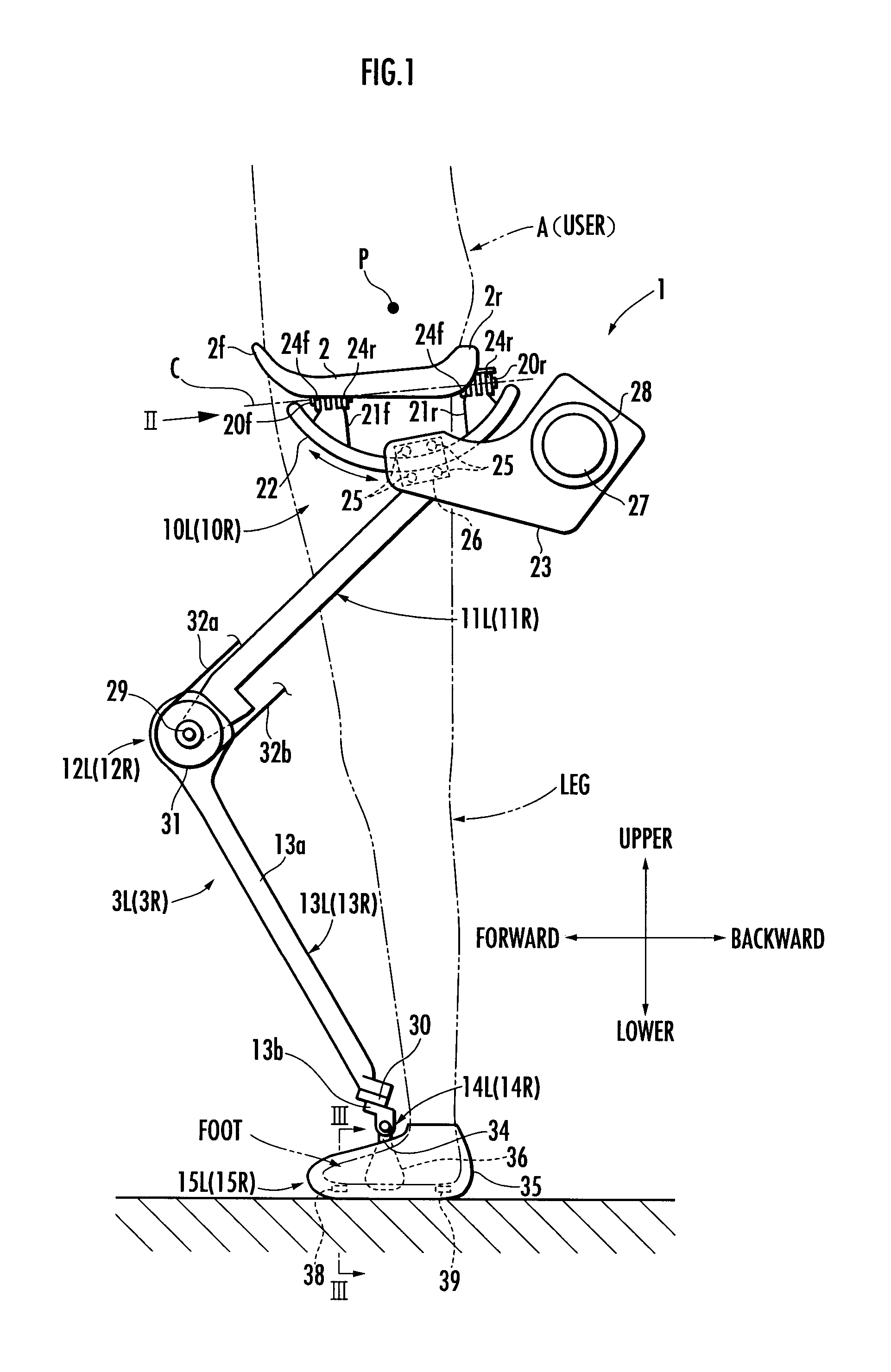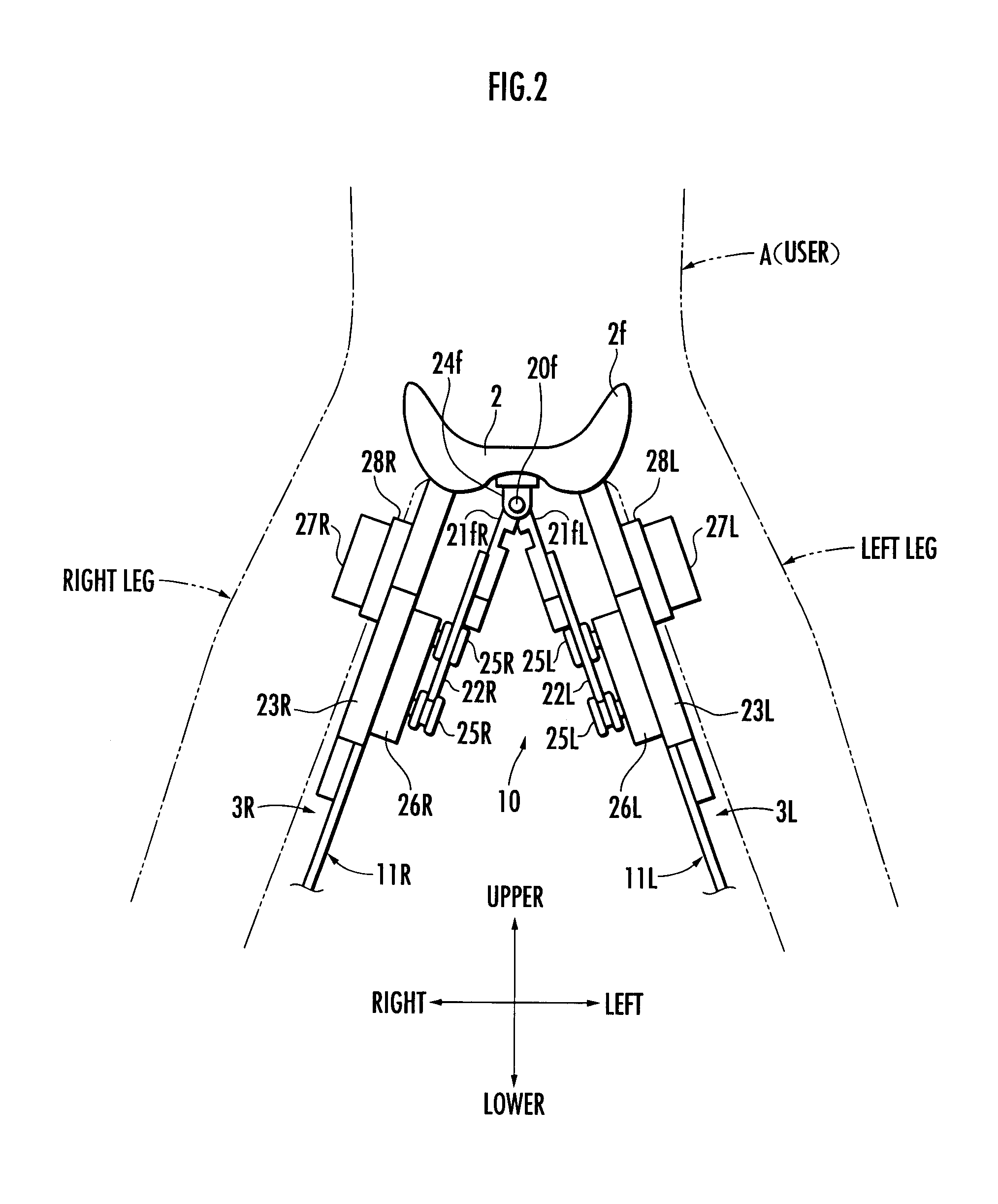Controller for walking assistance device
a technology of assistance device and controller, which is applied in the field of assistance device for walking assistance, can solve the problems of not having a technology to appropriately divide the lifting force between the leg links, the user cannot apply the desired lifting force stably, and the user needs a complicated coordinated control of the actuator, so as to reduce the load on the legs of the user more effectively and reduce the force
- Summary
- Abstract
- Description
- Claims
- Application Information
AI Technical Summary
Benefits of technology
Problems solved by technology
Method used
Image
Examples
first embodiment
[0149]In the first embodiment described hereinabove, the line of action of the supporting force (translational force) transmitted from the third joint 14 of each leg link 3 to the crus frame 13 is substantially the same as a straight line which passes through the forward / backward swing central point P existing above the seat member 2 within the width in the anteroposterior direction of the contact surface between the seat member 2 and the user A from the central point of the third joint 14. Then, each leg link 13 is free to swing in the forward / backward direction with respect to the seat member 2 with the forward / backward swing central point P as a fulcrum. Therefore, the position and posture of the seat member 2 balance out in a state where an action point (more specifically, a center of gravity of a load distributed over the contact surface between the user A and the seat member 2) of a load applied to the seat member 2 from the user A (a translational force which is balanced with...
fifth embodiment
[0187]In the embodiments described above, the first force sensor is composed of the MP sensor 38 and the heel sensor 39, these sensors 38 and 39 being provided in the foot attachment portions 15 so that they are located between the sole of the foot of a standing leg of the user A and a floor, as shown in FIG. 3. The mounting position of the first force sensor, however, is not limited thereto. The first force sensor can alternatively be provided in the foot attachment portion as shown in, for example, FIG. 18. This case will be described below as a
[0188]Referring to FIG. 18, in the fifth embodiment, a foot supporting member 100 is provided inside the annular member 36 of a foot attachment portion 15. The foot supporting member 100 shaped like a slipper is composed of a plate-like foot sole member 101 (a member like an insole of a shoe) that comes in contact with substantially the entire sole of a foot of a user A and an arched member 102 (a member having a cross section of an approxi...
second embodiment
[0209]FIG. 14 is a block diagram showing a functional configuration of an arithmetic processing unit provided in a controller for a walking assistance device according to the present invention;
[0210]FIG. 15 is a block diagram showing a processing flow of left and right desired lifting force share determining means in FIG. 14:
PUM
 Login to View More
Login to View More Abstract
Description
Claims
Application Information
 Login to View More
Login to View More - R&D
- Intellectual Property
- Life Sciences
- Materials
- Tech Scout
- Unparalleled Data Quality
- Higher Quality Content
- 60% Fewer Hallucinations
Browse by: Latest US Patents, China's latest patents, Technical Efficacy Thesaurus, Application Domain, Technology Topic, Popular Technical Reports.
© 2025 PatSnap. All rights reserved.Legal|Privacy policy|Modern Slavery Act Transparency Statement|Sitemap|About US| Contact US: help@patsnap.com



